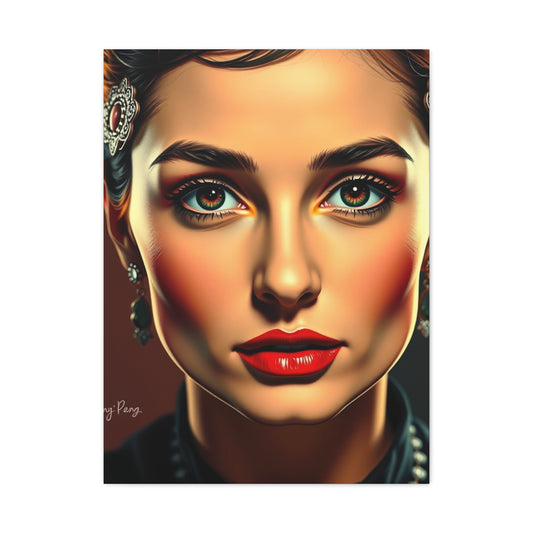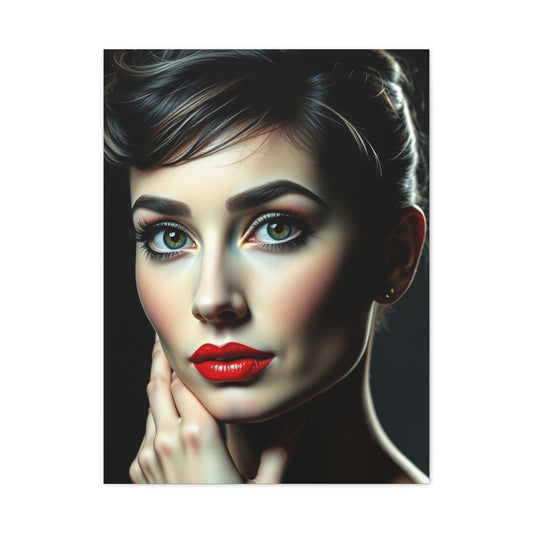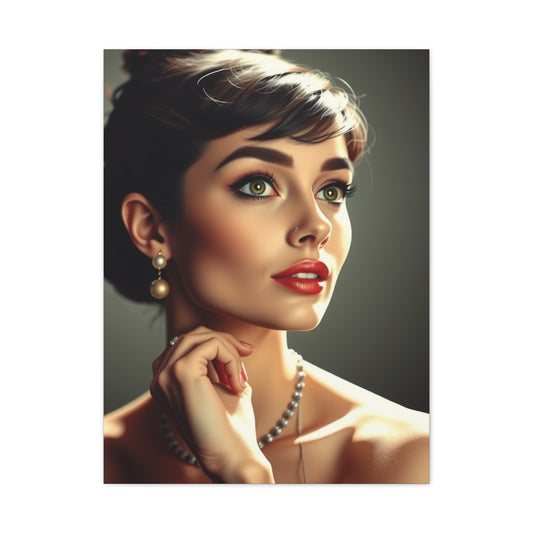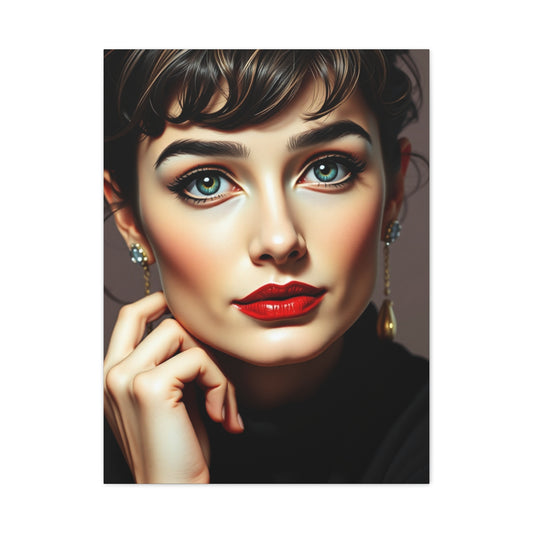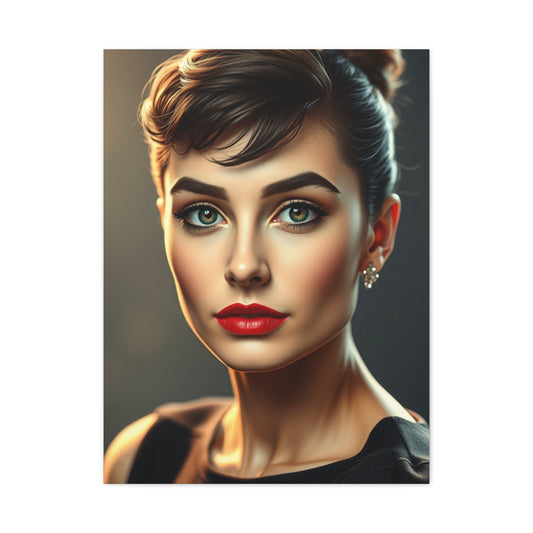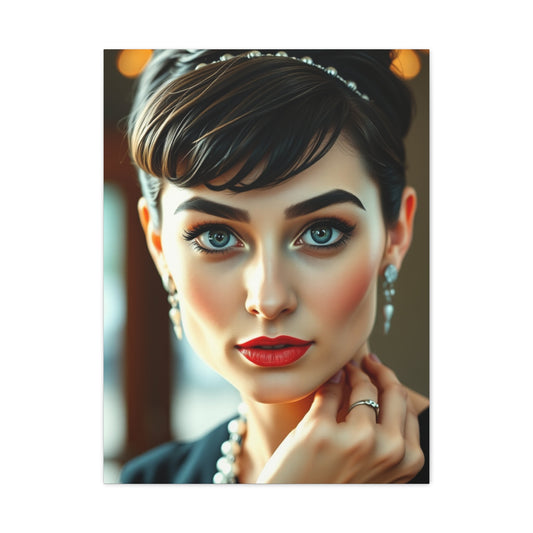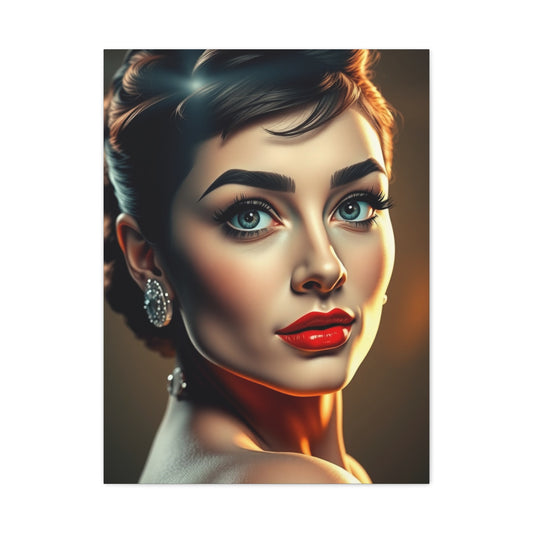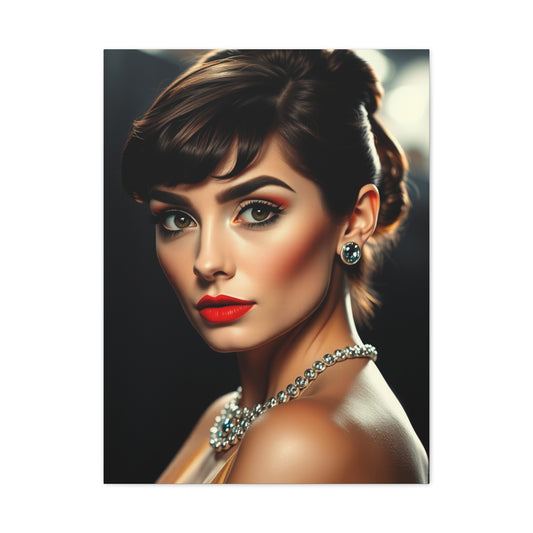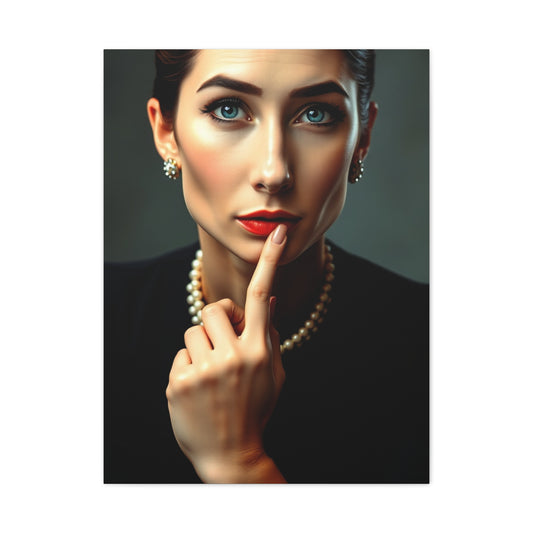-
Audrey Hepburn Art Supreme Canvas Wall Art & Canvas Print
Regular price From $141.23 USDRegular priceUnit price per -
Audrey Hepburn Art Luxury Canvas Wall Art & Canvas Print
Regular price From $141.23 USDRegular priceUnit price per -
Masterpiece Audrey Hepburn Art Vision Wall Art & Canvas Print
Regular price From $141.23 USDRegular priceUnit price per -
Collection Audrey Hepburn Art Art Wall Art & Canvas Print
Regular price From $141.23 USDRegular priceUnit price per -
Audrey Hepburn Art Refined Canvas Wall Art & Canvas Print
Regular price From $141.23 USDRegular priceUnit price per -
Audrey Hepburn Art Supreme Gallery Wall Art & Canvas Print
Regular price From $141.23 USDRegular priceUnit price per -
Vision Audrey Hepburn Art Art Wall Art & Canvas Print
Regular price From $141.23 USDRegular priceUnit price per -
Supreme Audrey Hepburn Art Collection Wall Art & Canvas Print
Regular price From $141.23 USDRegular priceUnit price per -
Elite Audrey Hepburn Art Vision Wall Art & Canvas Print
Regular price From $141.23 USDRegular priceUnit price per
Audrey Hepburn's Artistic Journey: From Hollywood Icon to Creative Visionary
The enchanting world of cinema has given us countless luminaries, yet few have captivated audiences with the same ethereal grace and timeless elegance as Audrey Hepburn. To millions, she was the radiant face of classic films, an icon of sophistication whose charm seemed effortless both on and off the screen. But behind the dazzling performances and the glamorous aura lay a quieter truth: Audrey possessed a deeply personal and enduring connection to the arts that went far beyond her celebrated career as an actress. While the world admired her as a Hollywood legend, her private life was infused with artistic pursuits that revealed the hidden depths of her creative soul.
For Hepburn, art was not simply a pastime or an ornamental luxury—it was a vital expression of inner life, a way to interpret the world around her, and a means of finding beauty even in moments of hardship. Long before her image was immortalized in cinema classics such as Breakfast at Tiffany’s and Roman Holiday, Audrey was already cultivating a private artistic world. During her youth in the Netherlands, particularly throughout the harrowing years of World War II, she often turned to sketching and painting as both an escape and a form of resilience. These simple sketches—born from a child’s imagination yet shaped by the grim realities of wartime—hinted at a sensitivity and reflective nature that would remain central to her identity throughout her life.
As she matured, Hepburn’s appreciation for artistry evolved into a more refined and deliberate engagement. Her taste for aesthetics manifested not only in her work as an actress but also in her personal endeavors as a collector and creator. Unlike many stars of her era, who often relied heavily on designers and stylists to craft their public image, Audrey possessed an innate understanding of design principles, balance, and visual harmony. This sensibility was reflected in everything from the fashion choices that made her a style icon to the carefully curated interiors of her private homes. Her residences were often adorned with artworks she had thoughtfully selected, reflecting her preference for pieces that combined simplicity, elegance, and emotional depth.
Her private artistic endeavors extended to painting and drawing, practices she continued well into adulthood. Though she never sought public recognition for this side of her life, her works were deeply personal reflections, often imbued with themes of nature, tranquility, and emotional resonance. Creating art allowed her to step away from the demanding spotlight and reconnect with herself in ways that acting could not always provide. In these private creative moments, Audrey was not the international superstar adored by millions, but rather an individual searching for meaning, balance, and authenticity through artistic expression.
Her artistic sensibilities also shaped her humanitarian work later in life. When she devoted herself to UNICEF, her ability to frame human suffering through a lens of compassion and dignity revealed the same aesthetic awareness and emotional depth that had guided her creative journey. She understood that art—whether visual, cinematic, or performative—had the power to move hearts, change perspectives, and inspire action. This connection between artistry and empathy became a defining feature of her legacy, reminding us that her creativity was not only about beauty but also about humanity.
The hidden artistic soul of Audrey Hepburn adds remarkable depth to her already illustrious legacy. It reveals a woman who was more than just a Hollywood icon: she was a thoughtful creator, a sensitive observer of the world, and a true connoisseur of beauty in all its forms. Her artistry lived quietly in the background, but it informed every aspect of her public and private life, from her fashion and film roles to her philanthropy and personal spaces. In discovering this side of Hepburn, we come to understand that her brilliance was not confined to the silver screen but radiated from a much deeper well of creativity and vision.
Ultimately, Audrey Hepburn’s story is a reminder that behind every celebrated star lies an inner world rich with passions, dreams, and hidden talents. For Audrey, that hidden world was painted with strokes of elegance, resilience, and compassion, proving that her legacy as an artist—both seen and unseen—will continue to inspire generations to come.
Early Artistic Expressions:
The formative years of any artist often provide crucial insights into their later creative development, and this principle holds particularly true when examining the early artistic expressions that emerged during some of the most challenging periods of European history. During the tumultuous years of the Second World War, while residing in Holland, a young girl found solace and escape through the simple yet profound act of drawing and sketching.
These earliest artistic endeavors, created during the 1940s, served as more than mere childhood pastimes. They represented a psychological sanctuary, a means of transcending the harsh realities of wartime existence through the power of imagination and creative expression. The sketches and drawings from this period reveal a developing artistic sensibility that would later influence her adult aesthetic preferences and creative pursuits.
Among the most captivating of these early works are scenes that transport viewers into a world of fantasy and hope. One particularly enchanting composition depicts a Dutch couple adorned in traditional wooden clogs, walking hand in hand toward the radiant sun, accompanied by a majestic lion wearing a crown. This imagery speaks to themes of journey, companionship, and nobility that would later resonate throughout her life and career.
The collection of childhood artwork also includes numerous pieces inspired by fairy tales and nursery rhymes, suggesting an early fascination with storytelling through visual means. These whimsical creations demonstrate an intuitive understanding of narrative structure and symbolic representation that would prove invaluable in her later theatrical work. The ability to convey complex emotions and stories through simple lines and shapes reveals an innate artistic intelligence that went far beyond mere technical skill.
The significance of these wartime drawings extends beyond their artistic merit. They represent a form of resistance against despair, a refusal to surrender hope in the face of overwhelming circumstances. This resilient spirit, channeled through creative expression, would become a defining characteristic of her approach to both art and life. The therapeutic nature of these creative activities established a lifelong pattern of turning to artistic pursuits for comfort, reflection, and personal growth.
Childhood Creativity During Wartime
Childhood is often associated with innocence, play, and imagination. Yet, in times of war, the natural environment for children drastically changes, as fear, uncertainty, and loss become part of their daily reality. Despite these challenges, children have a remarkable ability to adapt, and their creativity often becomes a vital tool for survival, emotional healing, and hope. Childhood creativity during wartime reflects both resilience and the enduring human spirit, showing how imagination can thrive even in the harshest conditions.
One of the most profound expressions of creativity in wartime is found in children’s play. Even amidst destruction, children invent games using whatever resources are available. They may turn rubble into playgrounds, scraps into toys, or invent imaginative stories that distract them from the chaos surrounding them. This ability to create play from scarcity is not only a demonstration of resourcefulness but also a powerful coping mechanism that preserves a sense of normalcy and joy in a disrupted world.
Art and storytelling also become essential outlets for children living in conflict. Drawing pictures of homes, family members, or imagined peaceful worlds allows them to process fear and trauma. Stories, whether shared orally or written in secret diaries, become a way to escape into safer realities. These forms of creativity serve as a bridge between the harsh present and a hopeful future, offering children a voice when circumstances might otherwise silence them.
Music, songs, and cultural traditions also provide a creative refuge. Singing together or engaging in small performances allows children to bond with peers and feel part of something larger than themselves. These activities strengthen community ties and remind children of cultural identity, which is crucial in times when displacement and instability threaten to erase a sense of belonging.
Ultimately, childhood creativity during wartime is both an act of resilience and resistance. It shows how, even in moments of devastation, the human imagination cannot be fully suppressed. By drawing, singing, playing, and storytelling, children assert their right to dream and to hope. In doing so, they remind the world that creativity is not a luxury of peace but a vital lifeline in survival and healing.
Integrating Creativity into Daily Life
Creativity is often seen as a talent reserved for artists, musicians, or writers, but in truth, it is a vital human skill that can enrich every aspect of daily life. It is not confined to painting a canvas or composing a song; creativity thrives in problem-solving, communication, personal growth, and even the way we approach everyday routines. Integrating creativity into daily life means embracing imagination, curiosity, and flexibility, allowing us to see challenges as opportunities and routines as canvases for innovation.
One of the simplest ways to invite creativity into daily living is by rethinking routine tasks. Ordinary activities such as cooking, organizing, or even commuting can be transformed into opportunities for expression. For example, experimenting with new recipes, rearranging home décor, or trying different routes to work can break the monotony and encourage new perspectives. These small shifts stimulate the brain and nurture a habit of creative thinking, proving that innovation does not always require grand gestures—it can emerge in the little details of life.
Another meaningful way to cultivate creativity is through personal reflection. Keeping a journal, sketchbook, or digital notebook helps capture fleeting ideas that might otherwise be forgotten. Writing down observations, doodling, or brainstorming allows the mind to explore beyond immediate tasks and responsibilities. Reflection fosters mindfulness, which enhances awareness of the present moment and opens pathways for fresh insights. By engaging with our inner thoughts, we strengthen the connection between imagination and action, making creativity a consistent companion in our daily journey.
Surroundings also play an important role in encouraging creativity. A cluttered or uninspiring environment can restrict thought, while a space that incorporates colors, art, plants, or meaningful objects can spark new ideas. Creating an inspiring environment does not mean extravagant redesigns; even small touches like displaying motivational quotes, playing background music, or adding natural light can boost creativity. When our surroundings fuel inspiration, ordinary days become fertile grounds for new possibilities.
Creativity also thrives in human connection. Conversations with diverse groups of people expose us to different perspectives, sparking ideas that we might not generate alone. Collaboration, whether in professional settings or casual interactions, expands creative thinking and helps individuals learn new approaches to problem-solving. By listening, sharing, and engaging with others, we invite a flow of ideas that enriches both personal and collective creativity.
Importantly, integrating creativity into daily life requires cultivating an open mindset. Too often, people hesitate to embrace their imaginative side due to fear of judgment or failure. However, creativity flourishes when mistakes are seen not as setbacks but as stepping stones toward growth. Allowing room for experimentation without self-criticism builds confidence and encourages continuous exploration. This resilience nurtures creative thinking as a natural, ongoing process rather than a rare moment of inspiration.
Ultimately, creativity is not something to be practiced only on special occasions; it is a lifestyle that can infuse joy, meaning, and adaptability into our daily existence. By approaching everyday tasks with curiosity, reflecting on personal ideas, shaping our environments thoughtfully, connecting with others, and embracing openness, we can transform ordinary routines into extraordinary experiences. In doing so, creativity becomes not just an activity but a way of living—one that makes each day more vibrant, purposeful, and fulfilling.
Influences and Inspirations:
The development of any sophisticated artistic taste requires exposure to the works of established masters, and the evolution of her aesthetic sensibilities clearly reflects the influence of several prominent artists whose revolutionary approaches to color, form, and expression left indelible marks on her creative consciousness. The most significant among these influences appears to have been the groundbreaking work of Pablo Picasso, whose innovative techniques and bold artistic vision resonated deeply with her developing aesthetic understanding.
The connection to Picasso extended beyond mere appreciation to active engagement with his work and artistic community. Historical records indicate her attendance at the Picasso 75th Anniversary Exhibition in 1957, where she was photographed standing beside the master's Self-Portrait with Palette from 1906. This image captures more than a simple gallery visit; it represents a meeting of artistic minds across different mediums and generations.
The relationship with Picasso's work was not limited to public exhibitions. Reports from 1962 indicate that a drawing by the Spanish master was stolen from her residence, suggesting that her appreciation for his work extended to personal collecting. This incident raises intriguing questions about the extent of her art collection and the specific pieces that adorned her private spaces. The fact that such a valuable work was present in her home speaks to both her sophisticated taste and her commitment to surrounding herself with meaningful artistic expressions.
Beyond Picasso, the influence of Vincent van Gogh becomes apparent when examining her own creative output. The Dutch post-impressionist's distinctive approach to color, texture, and emotional expression seems to have profoundly impacted her artistic development. This influence becomes particularly evident in her later painting endeavors, where elements of van Gogh's technique and aesthetic philosophy can be clearly observed.
The appreciation for van Gogh's work likely stemmed from several factors, including his intense emotional expression, his innovative use of color and brushwork, and perhaps most significantly, his ability to find profound beauty in simple, everyday subjects. These qualities aligned perfectly with her own artistic sensibilities and life philosophy, creating a natural affinity that would influence her creative development for years to come.
Sketches to Sophisticated Paintings
The transition from childhood sketching to adult artistic creation represents a natural evolution of creative talent that had been nurtured since early years. While maintaining a demanding career in the entertainment industry, she continued to pursue personal artistic projects that provided both creative fulfillment and emotional expression. These endeavors reveal a commitment to artistic growth that extended far beyond professional obligations.
One of the most significant examples of her mature artistic work is the painting titled Flower Basket at La Paisible, created in 1969 at her residence in Tolochenaz, Switzerland. This work holds particular emotional significance as it was completed during her pregnancy with her son Luca, representing a period of anticipation, creativity, and personal transformation. The timing of this painting's creation suggests that artistic expression served as a means of processing and celebrating significant life events.
The technical execution of Flower Basket at La Paisible reveals sophisticated understanding of painterly techniques and aesthetic principles. The treatment of the wicker basket handle demonstrates masterful attention to texture and form, with carefully rendered outlines and deliberate brushstrokes that create convincing three-dimensional representation. This technical proficiency suggests extensive practice and study, indicating that her artistic pursuits were serious endeavors rather than casual hobbies.
The influence of van Gogh becomes particularly apparent in the impasto technique employed in rendering the flower petals. The buildup of paint creates rich texture and dimensional quality that echoes the Dutch master's revolutionary approach to surface treatment. This technical similarity suggests not mere imitation but rather a deep understanding of how such techniques can enhance emotional expression and visual impact.
The color palette and compositional elements of the painting also reflect sophisticated aesthetic judgment. The green and yellow strokes in the upper corners of the composition evoke van Gogh's landscape paintings, particularly his wheat field series. This reference demonstrates familiarity with art historical precedents while maintaining individual creative voice and personal interpretation.
Additional evidence of her continued artistic activity can be found in photographs taken within her personal living spaces. One particular image shows her in her home with what appears to be another of her paintings visible in the background. This work, featuring simplified representations of vases and flowers, suggests exploration of different stylistic approaches and perhaps influence from Henri Matisse's distinctive treatment of form and color.
Building a Personal Art Collection
The development of sophisticated taste in art collecting represents another dimension of her artistic engagement that reveals deep appreciation for quality, historical significance, and aesthetic excellence. The presence of works by major artists in her personal collection demonstrates not only financial capacity but also educated judgment in selecting pieces that would provide lasting pleasure and cultural value.
The theft of the Picasso drawing from her residence in 1962 provides fascinating glimpse into the scope and quality of her personal collection. The fact that such a valuable work was targeted suggests that her collection included multiple pieces of significant worth and artistic importance. The circumstances surrounding this theft and the ultimate fate of the stolen work remain mysteries that continue to intrigue art historians and enthusiasts.
The selection criteria for her art collection appear to have been guided by personal aesthetic preferences rather than investment considerations or social status. The works known to have been in her possession reflect consistent taste for modern and post-impressionist artists whose innovative approaches to color, form, and expression aligned with her own artistic sensibilities.
Living arrangements also reflect her commitment to surrounding herself with beautiful objects and artistic environments. During her marriage to Andrea Dotti, their Roman penthouse was located in a former cardinal's palace, featuring soaring ceilings adorned with painted frescoes. This choice of residence demonstrates appreciation for historical artistic traditions and understanding of how architectural elements can enhance daily living experiences.
The integration of art into her living spaces suggests viewing artistic objects not as mere decorations but as essential elements that contributed to the quality and meaning of domestic life. This approach reflects sophisticated understanding of how art can transform environments and enrich daily experiences through continuous visual engagement with beautiful and meaningful objects.
Gardens as Living Art
Perhaps no aspect of her artistic sensibility was more personally meaningful than her passionate engagement with gardening and landscape design. For her, gardens represented the ultimate synthesis of artistic vision and natural beauty, creating living compositions that changed with seasons and grew more beautiful with time. This appreciation for horticultural artistry extended far beyond casual interest to become a defining passion that influenced major life decisions and career choices.
The concept of gardens as living art reflects sophisticated understanding of how natural elements can be arranged and cultivated to create aesthetic experiences comparable to traditional artistic mediums. The careful selection of plants, consideration of color combinations, attention to seasonal changes, and awareness of spatial relationships all contribute to creating outdoor environments that function as three-dimensional compositions of remarkable complexity and beauty.
Her dedication to this form of artistic expression eventually influenced her decision to participate in the documentary series Gardens of the World, which aired in 1993. This project allowed her to share her passion for horticultural artistry with broader audiences while exploring some of the world's most magnificent garden environments. The documentary format provided perfect vehicle for combining her natural grace and communication skills with her genuine enthusiasm for the subject matter.
The production circumstances of Gardens of the World reveal the depth of her commitment to the project. Despite budget limitations that prevented hiring professional stylists, she insisted on handling her own wardrobe, hair, and makeup for the series. This decision reflects not only practical problem-solving abilities but also understanding of how personal presentation contributes to the overall artistic impact of the documentary.
The gardens featured in the series represent diverse approaches to landscape design and horticultural artistry from various cultural traditions. Through her exploration of these different garden styles, viewers gained insights into how different societies have approached the challenge of creating beauty through the arrangement of natural elements. Her presentation style brought warmth and accessibility to subjects that might otherwise seem academic or intimidating.
The timing of the series, which aired shortly after her death, adds poignant dimension to the project. Gardens of the World serves as final artistic statement, demonstrating her continued commitment to sharing beauty and knowledge with others even during her final years. The documentary stands as testament to her belief in the power of natural beauty to inspire and enrich human experience.
Artistic Lifestyle:
The true measure of artistic sensibility often lies not in isolated creative acts but in the consistent integration of aesthetic principles into all aspects of daily existence. Her approach to life reflected deep understanding of how artistic consciousness can transform ordinary experiences into opportunities for beauty, meaning, and creative expression. This integration of art and life created coherent aesthetic philosophy that influenced everything from interior design choices to personal relationships.
The careful curation of her living environments demonstrates commitment to surrounding herself with objects and arrangements that provided daily inspiration and pleasure. Rather than viewing art as something separate from daily life, she understood that the consistent presence of beautiful objects and thoughtful arrangements could elevate the quality of everyday experiences and contribute to overall well-being and creative development.
Personal style and fashion choices also reflected artistic sensibility that extended beyond mere trend-following to encompass deeper understanding of how visual elements could be combined to create compelling and memorable impressions. The famous connection noted between her fashion preferences and those of Picasso, particularly their shared appreciation for sailor stripes, suggests recognition of how artistic principles could be applied to personal presentation.
The integration of natural elements into her living spaces through flower arrangements and garden views demonstrates understanding of how organic beauty could complement and enhance created artistic objects. This synthesis of natural and artificial beauty reflects sophisticated aesthetic judgment that recognized value in both carefully cultivated natural environments and human artistic creations.
Travel choices and residential preferences also reflect artistic consciousness that prioritized beauty and cultural richness over mere convenience or status. The selection of homes with historical significance, architectural distinction, and opportunities for garden development demonstrates consistent commitment to living within environments that supported and nurtured creative sensibilities.
Art Beyond the Silver Screen
The artistic legacy extends far beyond her film career to encompass broader influence on how beauty, creativity, and aesthetic consciousness can enrich human experience. Her example demonstrates that artistic sensibility is not limited to professional artists but can be cultivated and expressed by anyone willing to develop sensitivity to beauty and commitment to creative expression.
The 2014 revelation by her son Sean Ferrer regarding undiscovered artworks among her personal effects suggests that the full extent of her artistic output may yet to be revealed. These works, potentially destined for auction to benefit charitable causes, could provide new insights into her creative development and artistic evolution during different periods of her life.
The potential future auction of these works raises intriguing questions about how previously unknown artistic creations might expand our understanding of her creative capabilities and aesthetic development. Such discoveries could reveal experimentation with different mediums, exploration of various subjects, or evolution in technique and style that occurred outside public view.
The charitable dimension of the potential artwork sales reflects lifelong commitment to using personal resources and talents to benefit others, particularly children in need. The Audrey Hepburn Children's Fund represents continuation of her humanitarian values through organized charitable activity that extends her positive influence beyond her lifetime.
The documentation and preservation of her artistic works serves important function in art historical research and popular culture studies. These materials provide valuable insights into how artistic sensibility developed and functioned within the context of mid-twentieth-century celebrity culture and changing social expectations for women in entertainment industries.
Cultural Impact:
The broader cultural influence of her artistic sensibilities extends far beyond personal creative achievements to encompass lasting impact on how subsequent generations have approached questions of beauty, style, and creative expression. Her example continues to inspire individuals seeking to integrate artistic consciousness into their own lives and careers, regardless of their professional fields or artistic training.
The enduring fascination with her personal style and aesthetic choices reflects recognition that her approach to beauty was grounded in genuine artistic understanding rather than superficial trend-following. This authentic foundation gives her influence lasting power that transcends changing fashion cycles and cultural shifts.
Educational institutions and cultural organizations continue to study and present her work as example of how artistic sensibility can be developed and applied across multiple areas of human activity. These academic and cultural interpretations help preserve and transmit the lessons of her artistic approach to new generations of students and enthusiasts.
The integration of her artistic interests with humanitarian activities provides model for how creative individuals can use their talents and influence to address social issues and contribute to positive change. This synthesis of artistic and humanitarian concerns demonstrates potential for creative expression to serve broader social purposes beyond mere aesthetic pleasure.
Museum exhibitions and cultural events continue to explore various aspects of her artistic legacy, ensuring that these contributions remain visible and accessible to contemporary audiences. Such presentations help maintain public awareness of the depth and significance of her artistic achievements while inspiring continued interest in the relationship between creativity and social responsibility.
Conclusion:
The comprehensive examination of Audrey Hepburn's relationship with art reveals a complex and multifaceted engagement that extended far beyond her celebrated film career. Her artistic journey, from childhood sketches created during wartime to sophisticated paintings and art collecting as an adult, demonstrates the profound role that creative expression played throughout her entire life. This exploration unveils a dimension of her personality that remained largely hidden from public view yet was fundamental to her identity and worldview.
The artistic sensibilities that guided her personal creative endeavors, collecting choices, and lifestyle decisions reflect deep understanding of how beauty and creative expression can enrich human experience and provide meaning beyond material success. Her appreciation for masters like Picasso and van Gogh, combined with her own creative output, demonstrates sophisticated aesthetic judgment that developed through years of study, practice, and genuine engagement with artistic traditions.
The integration of art into every aspect of her daily life, from carefully curated living spaces to passionate engagement with garden design, illustrates how artistic consciousness can transform ordinary experiences into opportunities for beauty and inspiration. Her approach serves as compelling example of how individuals can develop and maintain creative sensibilities regardless of their primary professional pursuits.
The documentary Gardens of the World stands as testament to her commitment to sharing artistic appreciation with broader audiences, demonstrating how personal passions can be transformed into educational and inspirational content that benefits others. This project exemplifies the generous spirit that characterized her approach to both art and life, using her platform and influence to celebrate beauty and encourage others to develop their own aesthetic appreciation.
The potential future revelation of additional artworks among her personal effects promises to add new chapters to our understanding of her creative development and artistic evolution. These discoveries could provide fresh insights into her techniques, subject preferences, and stylistic development during different periods of her life, enriching the already fascinating story of her artistic journey.
The charitable implications of these potential artwork sales reflect the consistent integration of humanitarian values with artistic pursuits that characterized her entire approach to life and career. The Audrey Hepburn Children's Fund represents continuation of her commitment to using personal resources and influence to benefit others, particularly those most vulnerable and in need of support.
The enduring influence of her artistic example continues to inspire contemporary individuals seeking to integrate creative consciousness into their own lives and careers. Her demonstration that artistic sensibility can be cultivated and expressed across multiple dimensions of human activity provides encouraging model for anyone interested in developing greater appreciation for beauty and creative expression.
The scholarly and cultural attention devoted to preserving and interpreting her artistic legacy ensures that future generations will have access to these inspiring examples of how creativity and humanitarian concern can be successfully combined. Educational institutions, museums, and cultural organizations continue to find new ways to present and explore these contributions, maintaining their relevance for contemporary audiences.
Her story ultimately demonstrates that true artistic achievement extends beyond technical skill or professional recognition to encompass the broader integration of creative consciousness into all aspects of life. The consistency with which she applied artistic principles to personal relationships, living environments, charitable activities, and creative pursuits reveals authentic commitment to beauty and meaning that transcended mere aesthetic posturing.
The lasting appeal of her artistic example reflects recognition that genuine artistic sensibility, grounded in sincere appreciation for beauty and commitment to creative expression, possesses timeless relevance that transcends specific historical periods or cultural contexts. Her legacy continues to inspire and guide those seeking to develop their own relationships with art and creativity, proving that the pursuit of beauty and meaning remains as important today as it was during her lifetime.
Through this comprehensive exploration of her artistic life, we gain deeper appreciation not only for her individual achievements but also for the broader potential that exists within each person to develop creative consciousness and use it to enrich both personal experience and social contribution. Her example reminds us that art is not merely decoration or entertainment but rather a fundamental human capacity for creating meaning, beauty, and positive change in the world.

